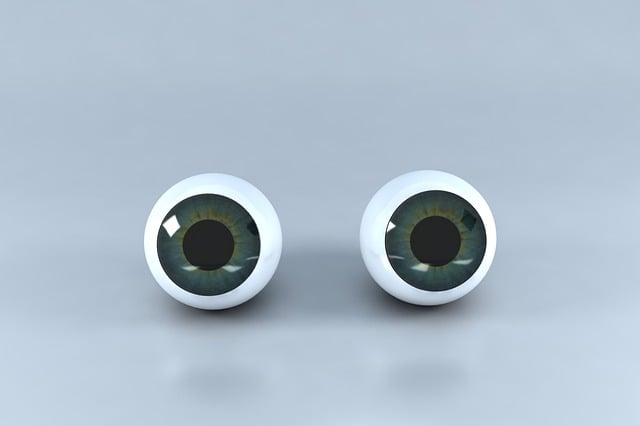High-resolution 3D imaging is a game-changer in dental and maxillofacial surgery, offering surgeons detailed 3D views of the oral cavity for accurate assessments, personalized treatment planning, reduced surgery times, minimized risks, and enhanced patient satisfaction. It enables precise navigation, identifies complex anatomies, and improves communication among healthcare professionals, ultimately revolutionizing dentistry with better outcomes and increased confidence.
“The advent of high-resolution 3D imaging has transformed dental and maxillofacial surgery, revolutionizing treatment plans and outcomes. This cutting-edge technology offers unprecedented precision in surgical procedures, enabling dentists to visualize intricate anatomical details with remarkable clarity. From enhancing the accuracy of implant placements to planning complex reconstructive surgeries, 3D imaging is a game-changer. This article explores how this advanced tool improves patient safety, enhances comfort, and promises an exciting future for dental care.”
Enhancing Precision: High-Resolution 3D Imaging in Dental Surgery
High-resolution 3D imaging has become an invaluable tool in dental and maxillofacial surgery, significantly enhancing precision and surgical outcomes. This advanced technology provides dentists with a detailed, three-dimensional view of the oral cavity, allowing for more accurate assessments and planning. By capturing intricate anatomical structures, including teeth, gums, bones, and surrounding tissues, high-resolution 3D imaging enables surgeons to identify potential challenges and plan personalized treatment strategies.
The clarity and detail afforded by this technology are particularly beneficial in complex surgical procedures. Surgeons can now visualize the exact orientation of teeth, detect subtle abnormalities, and navigate around vital structures with greater confidence. This level of precision leads to reduced surgery times, minimized risks, and improved overall patient satisfaction.
Visualizing Complex Cases: Maxillofacial Benefits
High-resolution 3D imaging has transformed dental and maxillofacial surgery by providing surgeons with an unprecedented level of detail and visualization. In complex cases, where anatomical structures are intricate or where previous surgeries have altered the normal topography, 3D imaging offers a comprehensive view that aids in accurate planning and execution. This technology enables dentists to explore every nook and cranny of the oral cavity and surrounding areas, ensuring no critical structure is overlooked.
Maxillofacial surgery, in particular, benefits greatly from this advanced visualization tool. Surgeons can more easily navigate through dense bone structures, identify vital nerves, and pinpoint blood vessels. This level of detail is crucial for successful outcomes, minimizing complications, and enhancing patient safety. Moreover, 3D imaging allows for precise surgical simulations, enabling dentists to anticipate challenges and refine their approaches before making incisions.
Patient Safety and Comfort: 3D's Role in Planning and Execution
Patient Safety and Comfort are paramount in dental and maxillofacial surgeries, and high-resolution 3D imaging plays a pivotal role in achieving both. By providing detailed, three-dimensional views of the oral cavity and surrounding structures, this technology allows surgeons to plan procedures with greater precision. They can identify complex anatomies, avoid critical areas like nerves and blood vessels, and tailor treatments to individual patient needs.
This level of planning translates into enhanced execution during surgeries. Surgeons can navigate with confidence, reducing the risk of complications and ensuring a smoother procedure for the patient. Moreover, high-resolution 3D imaging contributes to improved communication between surgeons, patients, and other healthcare professionals, fostering a collaborative environment that prioritizes patient safety and comfort throughout every step of the surgical journey.
Future of Dentistry: Revolutionizing Treatment with 3D Imaging
The future of dentistry promises a paradigm shift driven by advanced technologies like high-resolution 3D imaging. This innovative tool is revolutionizing treatment planning, offering unprecedented accuracy and precision in diagnosing and treating dental and maxillofacial conditions. By creating detailed, three-dimensional models of oral structures, it allows for more precise surgical interventions, improved fit of prosthetics, and better overall patient outcomes.
With its ability to capture intricate details that traditional two-dimensional imaging cannot match, high-resolution 3D imaging is transforming the dental surgery landscape. This technology enables dentists and maxillofacial surgeons to navigate complex anatomies with enhanced confidence, plan surgeries with greater efficiency, and ultimately provide more effective care for patients.
The integration of high-resolution 3D imaging in dental and maxillofacial surgery has revolutionized treatment planning and execution. By providing detailed, accurate visualizations of oral structures, this technology enhances precision during procedures, particularly in complex cases. Patient safety and comfort are significantly improved through comprehensive preoperative assessments, enabling surgeons to tailor treatments effectively. Looking ahead, the future of dentistry promises even greater advancements with 3D imaging, potentially transforming how we approach various dental and maxillofacial interventions.
